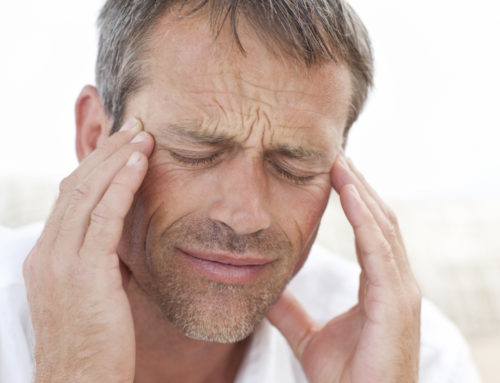 Meniere’s disease is an inner ear disorder with the following symptoms:
Meniere’s disease is an inner ear disorder with the following symptoms:
- Tinnitus – a ringing, buzzing, or hissing noise in the inner ear
- Vertigo – the sensation that you or your surroundings are spinning
- Temporary hearing loss which may become permanent if not cared for
- A feeling of congestion or fullness in the inner ear
In most cases, just one ear is affected by Meniere’s disease. There is also the possibility of sudden vertigo episodes or experiencing a brief period of muffled hearing or tinnitus. The attacks of dizziness can occur singularly without repeated instances for a while in between, or they may happen in succession to one another over a few days. These kinds of vertigo episodes are so intense that the person may drop to the ground, having lost their balance or feeling as though someone has pushed them from behind.
Meniere’s disease can happen to anyone, but it is more prevalent among the age group of 40 to 60 years. Based on reports from the NIDCD (the National Institute on Deafness and Other Communication Disorders), 615,000 cases of Meniere’s disease are treated each year. Additionally, there are 45,500 new cases diagnosed annually.
What Causes Meniere’s Disease?
Pinning down the specific cause of Meniere’s disease remains a mystery, but one of the more commonly accepted theories is that it is caused by fluid build-up within the inner ear. This is not always the case for every Meniere’s disease sufferer. Here is some insight on what happens for the individuals with fluid build-up.
The labyrinth is composed of compartments in the inner ear that house the organs of balance (the semicircular canals and otolithic organs) and those related to hearing (the cochlea). There are 2 sections – the membranous labyrinth and the bony labyrinth. The membranous labyrinth holds a fluid called endolymph that helps the balance organs in the detection of movement. These same receptors send information to the brain regarding the body’s position, thereby enabling proper spatial awareness. In the cochlea, fluid is compressed in response to sound vibrations, and signals are sent to the brain by these sensory cells. For those with Meniere’s disease, the build-up of fluid interrupts proper function and hearing, resulting in vertigo and other symptoms of Meniere’s disease.
To learn more about the connection between head and neck injuries and vertigo download our complimentary e-book by clicking the image below.
What about the cases of Meniere’s disease where excess build-up of fluid is not a factor in causing the symptoms? Current research has brought to light a connection between whiplash and head and neck injuries to symptoms of Meniere’s disease.
For most individuals suffering from Meniere’s disease, their doctors will have limited knowledge about the condition because it is so rare. Usually, through a process of elimination, they will check for other similar conditions to help provide an accurate diagnosis. They may refer to medical books, such as the Merck Manual, but it is important to know that the Merck manual does not recognize whiplash and head or neck injuries in the list of possible causes for this condition. The list will include head or ear trauma as a possible risk factor. This can make it difficult complete a thorough diagnosis since the patient history of an accident or injury may be as far back as 15 years in the past. Why so long ago?
The recent research points to a misalignment in the cervical spine as a potential cause for Meniere’s disease, and based on what they learned, it could take up to 15 years’ time for a lesion to develop on the eustachian tube and affect hearing and balance. This is why doctors need to be extensive in their examination of each patient’s history, looking into any accidents from the past, particularly those including head trauma such as whiplash, a sporting injury, or even a trip and fall in which the head was impacted. All of these kinds of accidents can lead to a misalignment in the top bones of the upper cervical spine, specifically the C1 (atlas) or C2 (axis) bones.
The lesion that develops on the eustachian tube will gradually have a number of different effects. It could interrupt the inner ear from draining fluid optimally, resulting in fluid buildup. Or, it could be why dysfunction of the workings of the inner ear are happening. This is why it is so important to visit an upper cervical chiropractor the moment you experience an injury to your head or neck. The more immediately you tend to the problem, the more likely you can avoid complications of conditions such as Meniere’s disease. What if you already have Meniere’s disease – what can you do to get relief?
Evidence That Upper Cervical Chiropractors Can Treat Meniere’s Disease
New research by Dr. Michael Burcon, that was specifically focused on the impacts upper cervical chiropractic care had on 139 Meniere’s disease patients, made some incredible discoveries. Each patient was given specific adjustments by an upper cervical chiropractor, and of them, 136 reported positive progress or even complete resolution of their symptoms. That means that 97% of the patients from the study saw improvement! Two years later, the participants were asked about their symptoms, and the the responses confirmed that symptoms had improved from an average of 8.5 (with 10 being the worst) down to a 1.4. One important fact about all of these 139 participants is that every one of them had experienced head or neck trauma prior to developing Meniere’s symptoms.
Here at Thrive Chiropractic in Waynesville, Ohio, we bring relief to our Meniere’s patients by using an effective and gentle method. These kinds of adjustments encourage the bones of the neck to return to their proper position in a more natural way than by forcing the vertebrae through twisting or popping the spine. Many Meniere’s patients have had breakthrough with their symptoms through this method. Call us today to see what upper cervical care can do for you.
To schedule a complimentary consultation call our Waynesville, OH office at 513-897-0117 You can also click the button below.
if you are outside of the local area you can find an Upper Cervical Doctor near you at www.uppercervicalawareness.com.







